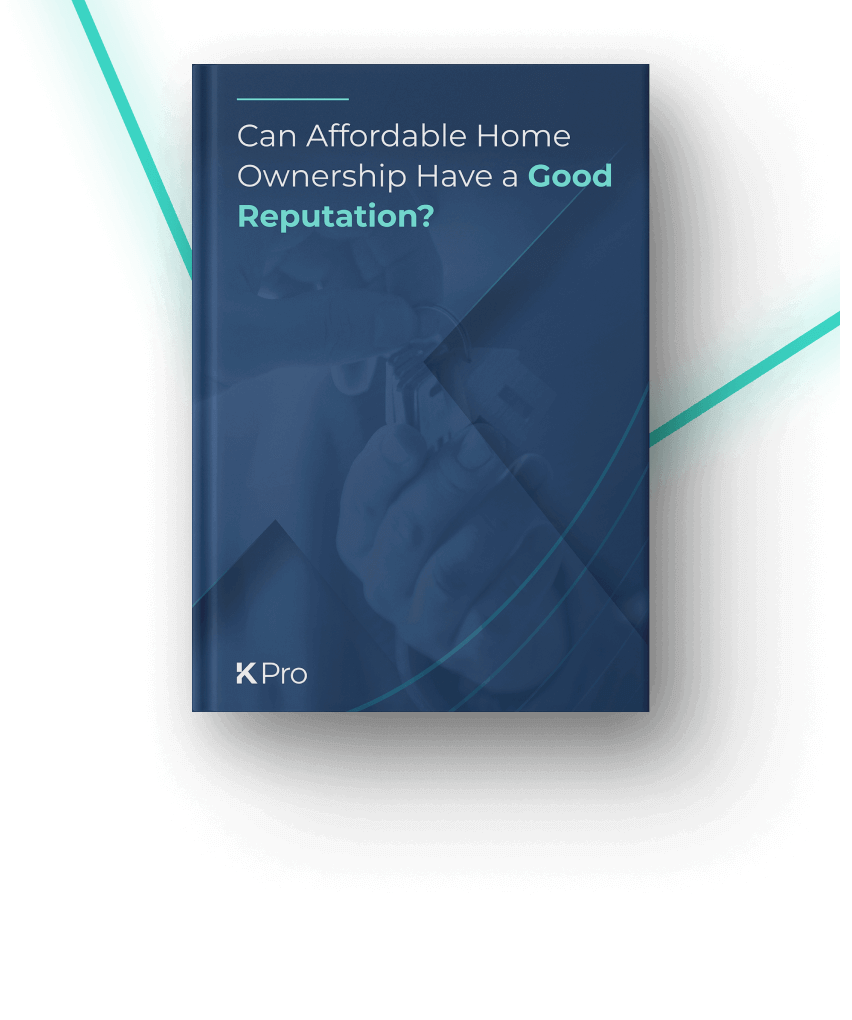
Forget Right to Buy, Housing Associations Need More Affordable Housing
The proposal to extend the Right to Buy to housing association tenants has returned. We’ve seen this before: in 2005, 2015 and in 2019, politicians announced the proposal, followed by varying levels of progress. While it’s been a popular political pledge, it’s also unlikely to be delivered — for the simple reason that housing associations don’t want it. It raises fears of further reducing the stock of affordable housing. Instead of an extension of Right to Buy, housing associations need more affordable housing — not less.
While Right to Buy can be seen as a success from some angles, housing associations have dealt with the fallout. By selling off homes, there has been a reduction in housing stock. This squeezes both providers and tenants and places more pressure on the overall affordable housing market.
More stock, not less, will benefit housing associations and their customers. In particular, more shared ownership housing can bolster the market. Why? Because it generates revenue for associations and is becoming an increasingly popular option with tenants, This requires investment. But with Government investment looking unlikely, providers need to find ways to generate revenue themselves.
In this article, we’ll take a look at the new Right to Buy proposal and explain why it’s not what housing associations need. They need more affordable housing.

The Returning Right to Buy Housing Association Proposal
Right to Buy, the ability for council tenants to buy their homes at a discounted price, has been around for decades.1 Between 1980 and 2021, nearly 2 million social housing properties have been sold through Right to Buy. 2
Recently, however, sales have been falling, down 35% in 2020/21: the lowest yearly figure in nearly a decade.3 Since then, rising house prices and deposit requirements have continued to rise, making Right to Buy increasingly unappealing.
To arrest this trend, the Government is again reportedly planning to extend the Right to Buy scheme to housing association tenants. This would allow them to purchase their homes at a discounted price, using their housing benefit to do so.
Why the expansion of Right to Buy is unlikely to happen
While it might be a popular pledge come election time, the proposed extension has always faced several obstacles. This particular version of the proposal might face some new obstacles too.
- Cost: Housing association stock is funded by private debt — which needs to be repaid. The Government would need to compensate housing associations if they forced associations to sell their properties at a discount. This cost could be huge. Meanwhile, the financing deals which funded the properties would need to be untangled.
- Housing associations aren’t keen: At first glance, this seems like a good opportunity for housing associations to use Government compensation to invest in building new homes. However, most housing associations simply don’t want to sell their properties, in part because there’s no guarantee that the properties they lose will be replaced.
- Voluntary Right to Buy: Housing associations aren’t under state control, and the extension is voluntary. Housing associations would have to voluntarily agree to the extension. The Voluntary Right to Buy has been piloted twice, in 2016 and 2018, and has not made significant progress since.
Additionally, the proposal was made by outgoing Prime Minister Boris Johnson. It’s unclear whether his successor will carry the policy through.
Even with the discount, soaring house prices and the rising cost of living means deposit prices are still too high for many tenants. 89% of adults living in Great Britain reported an increase in their cost of living between June and July 2022. This could push home ownership out of reach.
While inflation increases and household budgets become squeezed, house prices continue to rise. Taken together, this has contributed to driving consumer confidence to an all-time low — and a lack of appetite from housing association tenants to buy their homes.
Worried about the impact of Right to Buy on the affordable housing market?
Read our eBook Can Affordable Home Ownership Have a Good Reputation? Right to Buy’s impact.
The market needs more affordable housing
The extension of the Right to Buy proposal is not what housing associations need. Instead, they need more affordable housing.
Today, affordable housing stock is dwindling. As discussed above, there are potential advantages to the proposed extension. Without a guarantee that every sold home would be replaced, however, the number of affordable homes would fall further. The policy could exacerbate the problem by driving up the price of the remaining stock, making it even harder for tenants to get a foot on the housing ladder.
Guaranteeing to replace sold homes is important. Today, the number of homes sold under Right to Buy have far outstripped replacement supply. Since 1991, there has been an average net loss of 24,000 social homes. 4
Meanwhile, increased global demand for construction materials, alongside supply chain shortages and rising labour costs, have driven construction prices up to a 40-year high.5 In London, some developments have registered cost increases by up to 45%.6 This makes it even harder to replace any homes sold under Right to Buy.
The market needs more affordable housing, not less. But more housing requires investment.
Shared ownership offers a solution
Shared ownership was designed for the same group the Right to Buy extension is targeting: people on low incomes who want to get on the housing ladder. By targeting efforts on shared ownership, housing associations can provide customers with an affordable way to own a home.
- Revenue generation: In addition, shared ownership is one of the main avenues of revenue generation for housing associations. Getting more people in shared ownership properties means increased revenue for housing associations. This leads to more possibilities for reinvestment, both in housing stock and in internal processes.7
- New shared ownership model: The new shared ownership model makes the scheme more attractive to potential customers. Changes include a lower initial ownership stake and smaller staircasing increments.
- Increasing supply: Meanwhile, the supply of shared ownership homes has increased in recent years. In 2020/21, 17,100 units were delivered, an increase from the 4,080 units delivered in 2015/16.8
The increasing supply, combined with changes in the shared ownership scheme combines to make shared ownership increasingly attractive to tenants. Housing associations should see this as an opportunity.
Taking revenue and reinvestment into your own hands
To increase affordable housing stock, you need investment. There’s no guarantee of this coming from Government. This means housing associations need to be able to raise revenue, which enables investment, themselves.
One way housing associations can do this is by investing in modern affordable housing technology. This new technology streamlines marketing, sales, and letting systems to bring processes in line with the commercial market.
It’s no secret that the commercial market generates more revenue than the affordable housing market. This isn’t just because of their wider pool of customers. It’s also because they have tools specifically designed for their customers’ needs. They provide a personalised customer experience, automate tasks, and make sure processes are running efficiently.

Using the right tools
Tools designed specifically for the affordable housing market are making this possible for housing associations, too. Features of these new tools include:
- One-click listings: Listing properties across all listing sites with one click, putting an end to manual time-consuming processes.
- Lead centralisation: Centralising leads from your listing platforms in one place, enabling you oversight and insight into potential customers.
- Automation: Automate processes from email campaigns and remarketing, to document signing and workflows. Automation saves you time and ensures leads are followed up in a personalised and timely way.
- Reports and analytics: By providing insight into your data, you can generate customised reports. This provides a more detailed view of your stock and processes, helping you plan better long term.
These tools not only improve customer experience but also make your internal processes more efficient. This helps you get the right people in the right homes — more quickly, more efficiently, and with less hassle. More people in more houses means more revenue, which means reinvestment. This means more stock.
And with Help to Buy ending, alongside the new shared ownership model, housing associations might see a rise in demand. Equipped with the right tools, providers can prepare to take advantage of any potential new revenue and reinvestment.
Housing associations will carefully consider any proposal designed to help the affordable housing market. The returning Right to Buy proposal, however, isn’t the answer. More affordable housing, in particular shared ownership, is what housing associations need.
With the right tools, housing associations can take investment into their own hands by increasing their revenue. KPro is a toolkit designed with and for affordable housing providers. Get in touch today to see how KPro can help.
1 How does right to buy work and why is Boris Johnson planning to extend it?
2 Social housing sales and demolitions 2020-21: Right to Buy sales – GOV.UK
3 Right to Buy sales drop by a third in past 12 months
4 The damaging legacy of right to buy | New Economics Foundation
5 Construction materials cost increases reach 40-year high
6 House building slowing in London as cost of construction rises
7 Special report: sales-related surplus rises 9.7% among largest HAs
About The Author
Computer science graduate with over 15 years of housing experience. Leading sales, marketing, research and development teams, and strategies, at G15 organisations such as L&Q and Southern Housing Group.







